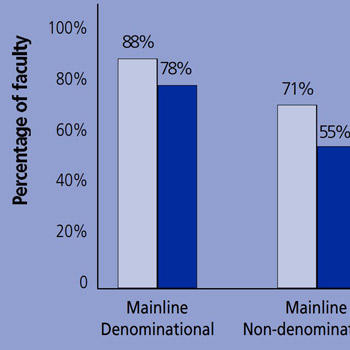At least publicly, most college presidents speak kindly of their governing boards. They extol their trustees’ dedication, expertise, and largess, usually in that order, although over a drink with peers the sequence often gets reversed.
Compliments and circumspection on the president’s part, however, should not be mistaken for contentment. Over the years, as a faculty member at the Harvard Seminar for New Presidents and as a governance consultant, I have heard presidents privately express a litany of concerns about their boards. All other concerns pale against the one nearly universal complaint: that trustees chronically fail to distinguish between policy and administration and, as a result, delve into managerial matters and operational decisions. In fact, the problem is so pervasive and permanent that the syndrome has been encapsulated in a single dreaded word: micromanagement.
Most presidents subscribe to a standard solution to the problem: Clarify the board’s roles with a definitive description of its responsibilities. Therefore, most institutions have bylaws or formal statements that delineate and, tacitly or explicitly, limit the scope of the board’s “job.” The holy grail is a clear division of labor between management and the board. Make sure trustees know what they are there to do, and then hold them to it.
That is a curious approach given that the specificity of job descriptions is almost always inversely related to the organization chart. The lower a job ranks in the hierarchy, the more detailed the tasks. Just as orderlies have less discretion than doctors, universities provide much more direction, for instance, to custodians and security guards than to deans and vice presidents. Most college presidents would be distressed if their cabinet members were poring over their job descriptions daily to determine what they should or should not do. And what if presidents themselves could only do what their job descriptions expressly prescribe? Yet, at the pinnacle of the organization, many presidents yearn to stipulate the trustees’ tasks and limit their latitude. It’s hard to imagine that a board, any more than a president, can codify its way to greatness, and both parties should have loftier goals than legislating damage control.
Root causes of micromanagement
A more fruitful strategy starts with an analysis of the root causes of the problem. Few trustees are fulfilled by meetings about minutiae or chances to tinker at the margins of daily operations. To the contrary, most board members in “real life” are motivated and engaged by complex problems of substantial importance. So what happens when they pass through the college gates?
Three forces combine to cultivate micromanagement. First, boards are structured to micromanage. The trustees’ standing committees typically replicate the college’s organization chart, mirroring and monitoring administrative functions. In effect, every senior officer has a shadow cabinet of sidewalk superintendents at the ready.
Second, trustees are invited to micromanage. Senior administrators often treat board members as pro bono management consultants. Trustees are asked to contribute technical expertise on various details of plans, policies, and projects. If the devil is in the details, then small wonder that trustees sometimes appear devilish.
Finally, trustees are relegated to micromanagement. College presidents aspire to be inspirational leaders, not mere managers. Such leaders shape the institution’s vision, values, and culture; set the organization’s agenda; devise a strategy to succeed; and then make meaning of what unfolds. Laudable ambitions to be sure, but if made the exclusive province of presidents, then what remains for trustees?
This diagnosis suggests that boards should depend less on standing committees designed to oversee operations and rely more on ad hoc work groups linked to institutional priorities. However useful, such structural changes go only so far.
The ultimate antidote to micromanagement is macroengagement. Colleges should immerse trustees in discussions where complex problems worthy of elegant solutions are first framed; where wisdom, insight, and empathy matter more than technical expertise; where organizational culture, values, and traditions are at issue; where the intention is to make sense of circumstances rather than make policies and pass resolutions; and where robust discourse displaces Robert’s Rules of Order. If trustees join conversations that concern governance, trustees will govern; when exposed to matters of management, board members will manage.
In the following examples, notice how the board’s role tilts either toward governance or management depending upon the trustees’ point of entry into the discussion.
Upstream: What are the values of the new generation of professionals concerning the balance between work and family, and how accommodating should we be? Downstream: To curb excessive turnover of faculty, should we revise the college’s incentive structure and leave policy? Should we add on-campus day care, and, if so, should the facility be self-managed or outsourced?
Upstream: How do organizations build enviable reputations, and what reputation do we want to cultivate with what audiences? Downstream: What can we do to improve our ranking in U.S. News & World Report? How can we attract more media attention?
In both examples, the upstream questions precipitate macroengagement and tap the board’s collective wisdom and experience. By contrast, the downstream questions promote micromanagement.
Reinforced by some senior administrators and professors, more than a few presidents hesitate to pose the right questions to boards. In some instances, the president may distrust the trustees’ instincts, motives, or comprehension, or some combination thereof, or the president may fear the reaction of others on the campus if the board were party to discussions of substantive topics. In other cases, a CEO, certain of the “right” answer, may see only a downside to board involvement, especially at the early stages when some trustees might presume that the question, never mind the president’s answer, is still up for grabs.
Make no mistake, macroengagement raises the ante. Defining the problem shapes the solution. And when assumptions, values, beliefs, and principles must be confronted and reconciled, the stakes only intensify. For those reasons, skeptical presidents accept micromanagement as the lesser of two evils.
There is an alternative. Presidents and trustees could fashion a new covenant: more macroengagement in exchange for less micromanagement. With meaningful participation upstream, trustees have more occasions to “first-guess” with the CEO about the nature of the problem and, consequently, less reason and right to second-guess downstream about implementation of the solution. In this scenario, the holy grail is not a precise division of labor, but rather a general meeting of the minds.
If the president doesn’t involve trustees in deciding what needs to be decided, then one or more of four complications will arise: The board will become detached and indifferent (a huge problem when the president needs the trustees’ moral, financial, and political support); the board will conclude at the midnight hour that management addressed the wrong problem; board members will largely pursue matters of personal interest; or trustees will plunge headlong into administrative portfolios where opportunities to micromanage are abundant and territorial sensitivities are acute.
It is not too much to claim that presidents, more than anyone else, direct a board’s focus and steer a board’s energy. The surest and swiftest way for presidents to extricate their trustees from the morass of micromanagement is to engage them sooner and more deeply, with more questions than answers on essential issues.
For presidents concerned that their boards may be insufficiently wise, knowledgeable, or competent to be a source of leadership for the institution beyond fiduciary oversight and philanthropic support, it might be well for them to remember that those same trustees were smart enough to recruit, reward, and retain them as presidents.
Condensed from “How to Keep Trustees from Being Micromanagers,” which appeared in the May 6, 2005, issue of The Chronicle of Higher Education. Used with permission.
For Further Reading
- Richard P. Chait, Thomas P. Holland and Barbara E. Taylor, The Effective Board of Trustees (Oryx Press, 1993).
- Richard P. Chait, Thomas P. Holland and Barbara E. Taylor, Improving the Performance of Governing Boards. (Oryx Press, 1996).
- Richard P. Chait, William R. Ryan and Barbara E. Taylor, Governance as Leadership: Reframing the Work of Non-Profit Boards (Jossey-Bass, 2004).




























